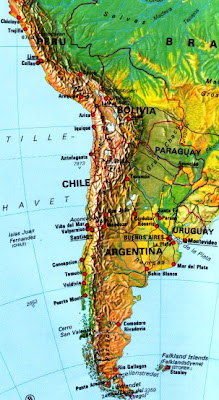Hhahahahhaa__masalah perut_saya adalah salah satu yang mengalami masalah ini _hhahaha_meskipun demikian saya bakal nge-post bagaimana cara mengecilkan perut....Dengan kondisi masalah perut membuat sistem sirkulasi tubuh tidak berjalan normal dan menjadi pemicu timbulnya berbagai masalah kesehatan, seperti kadar kolesterol tinggi dan tekanan darah tinggi. Sebagian besar perut menggelembung alias buncit disebabkan oleh faktor dasar yaitu gaya hidup yang salah. Berikut ini beberapa cara untuk menghilangkan perut buncit baik pada pria maupun wanita
 1. Minum air
1. Minum air
Jika kepenuhan perut disebabkan oleh penyimpanan air, Anda sebenarnya dapat mengurangi masalah tersebut dengan minum air lebih banyak. Hal ini akan mencairkan konsentrasi sodium dalam tubuh sehingga meningkatkan jumlah air yang keluar dari sistem. Minum lebih banyak air juga menjamin fungsi empedu efektif untuk mengeluarkan produk sampah. Jangan merubah konsumsi air saat diet karena banyak bahan yang sulit dicerna dan dapat menyebabkan perut menggelembung.
2. Makan perlahan-lahan
Hindari makan cepat, karena ketika Anda menelan terlalu cepat, setidaknya udara tertahan dalam usus dan membentuk gas yang dapat memicu penggelembungan perut. Selalu duduk saat makan dan kunyah makan secara perlahan-lahan. Makanan yang tidak terkunyah menjadi bagian-bagian kecil tidak dapat dicerna dengan sempurna yang kemudian menghasilkan banyak gas yang menimbulkan penggelembungan.
3. Mengurangi konsumsi garam
Terlalu banyak garam dalam diet menambah ektra sodium terhadap cairan tubuh yang memperlambat mekanisme sehingga mendorong air keluar dari sel. Akibatnya perut terasa penuh dan menggelembung.
4. Konsumsi serat yang tepat
Serat adalah elemen penting dalam diet, tetapi untuk mengimbangi penyimpanan air yang menyebabkan penggelembungan, makanlah serat dalam buah-buahan seperti apel dan pear yang memiliki banyak kandungan air.
5. Awasi pengobatan
Perut yang mengembang adalah efek samping dari konsumsi obat. Aspirin kadang-kadang menyebabkan masalah perut yang memicu sembelit dan penggelembungan, termasuk pil kontrasepsi.
6. Hindari sembelit
Sembelit didefinisikan sebagai memiliki lebih sedikit dari tiga kali buang air besar dalam seminggu atau jika terlibat ketegangan. Sebagai akibat perut terasa menambah besar. Untuk merangsang isi perut, tingkatkan konsumsi serat dari buah-buahan dan sayuran, lakukan secara gradual untuk menghindari fermentasi dan produksi gas yang berlebihan.
7. Olahraga
Olahraga memang salah satu cara yang wajib ditempuh untuk menghilangkan si perut buncit. Olahraga akan membantu menggerakkan cairan dalam perut yang dapat menyebabkan perut besar dengan mendorongnya keluar dari jaringan dan masuk aliran darah dimana akan dilkeluarkan sebagai keringat atau dibawa ke empedu untuk dikeluarkan sebagai urine. Olahraga yang disarankan antara lain aerobik.
Berikut Latihan untuk Mengecilkan Perut :
1__________
1. Berbaringlah di atas matras dengan kedua kaki dan tangan lurus ke atas.
2. Ambil napas lewat hidung dan luruskan tulang belakang.
3. Buang napas lewat mulut sambil mengangkat bagian atas tubuh (kepala, leher, dan bahu) semaksimal mungkin hingga kedua tangan hampir menyentuh kedua kaki.
2__________
1. Berbaringlah di atas matras dengan tangan diposisikan di belakang kepala.
2. Tekuk kaki kiri sehingga lutut kiri mengarah ke dada, sedangkan kaki kanan diangkat hingga membentuk sudut 45 derajat dengan lantai.
3. Angkat bagian atas tubuh (kepala, leher, dan bahu), dan arahkan pundak sebelah kanan untuk mendekati kaki kiri. Tahan hingga 3 hitungan.
4. Lakukan juga untuk sisi tubuh sebelah kanan, dan ulangi hingga 8-15 kali untuk masing-masing sisi tubuh.
3__________
1. Berbaringlah di atas matras dengan tangan di belakang kepala atau di sisi samping tubuh (pilihlah posisi yang membuat Anda lebih merasa nyaman)
2. Angkat bagian tubuh atas (pundak, leher, dan kepala) agar tidak menyentuh lantai, lalu angkat kedua kaki lurus ke atas dan kontraksikan otot perut.
3. Turunkan sedikit kedua kaki secara perlahan (maksimal 5 cm), tahan, lalu angkat perlahan hingga lurus ke atas kembali.
4. Ulangi hingga 8-15 kali.
4__________
1. Berbaringlah di atas matras dengan kedua tangan memegang dumbbell sambil diletakkan di atas dada, lalu tekuk kedua kaki.
2. Tarik napas lewat hidung dan luruskan tulang belakang.
3. Buang napas lewat mulut dan kencangkan otot perut, lalu angkat bagian atas tubuh (pundak, leher, dan kepala) dari matras.
4. Turunkan kembali badan secara perlahan, ulangi hingga 8-12 kali.
Sources : http://www.infoceria.com
by Facebook Comment






.jpg)




















